Splendid Bhutanese architecture inspired the design of the entire university campus in Texas
The architectures of the Kingdom of Bhutan are undisputedly world-class.
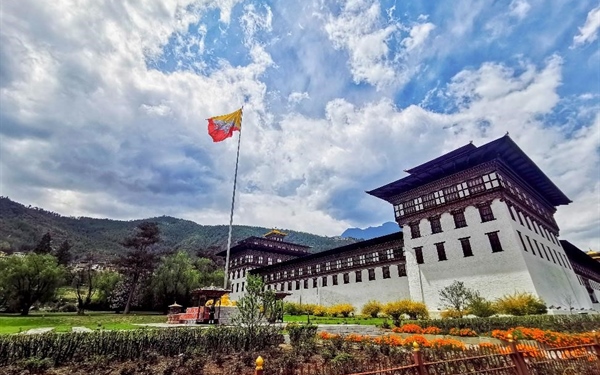
Introduction of Bhutan’s Architecture
One of the most prominent feature you'll notice upon landing in Bhutan's Paro Airport is the distinct and unique architectural design.
Many visitors of Bhutan often marvel at the sights of its magnificent ancient fortresses (known as Dzongs). The dzongs can be found throughout the country and visiting it will leave you in awe. The dzong architecture is massive in style with towering exterior walls surrounding a complex of courtyards, temples, administrative offices and monk's dwellings.
Some of its most distinctive features are the high inward sloping walls of brick and stone painted white. There are few or no windows in the lower sections of the wall. The colours of red and gold are prominently featured in the exterior decor. It has a unique style of overhanging roofs and massive entrances made of wood and iron. The interior of the courtyards and temples are brightly coloured in Buddhist-themed art motifs.
The most astounding fact about the architectural feat is that not a single piece of nail is used to build these majestic structures.
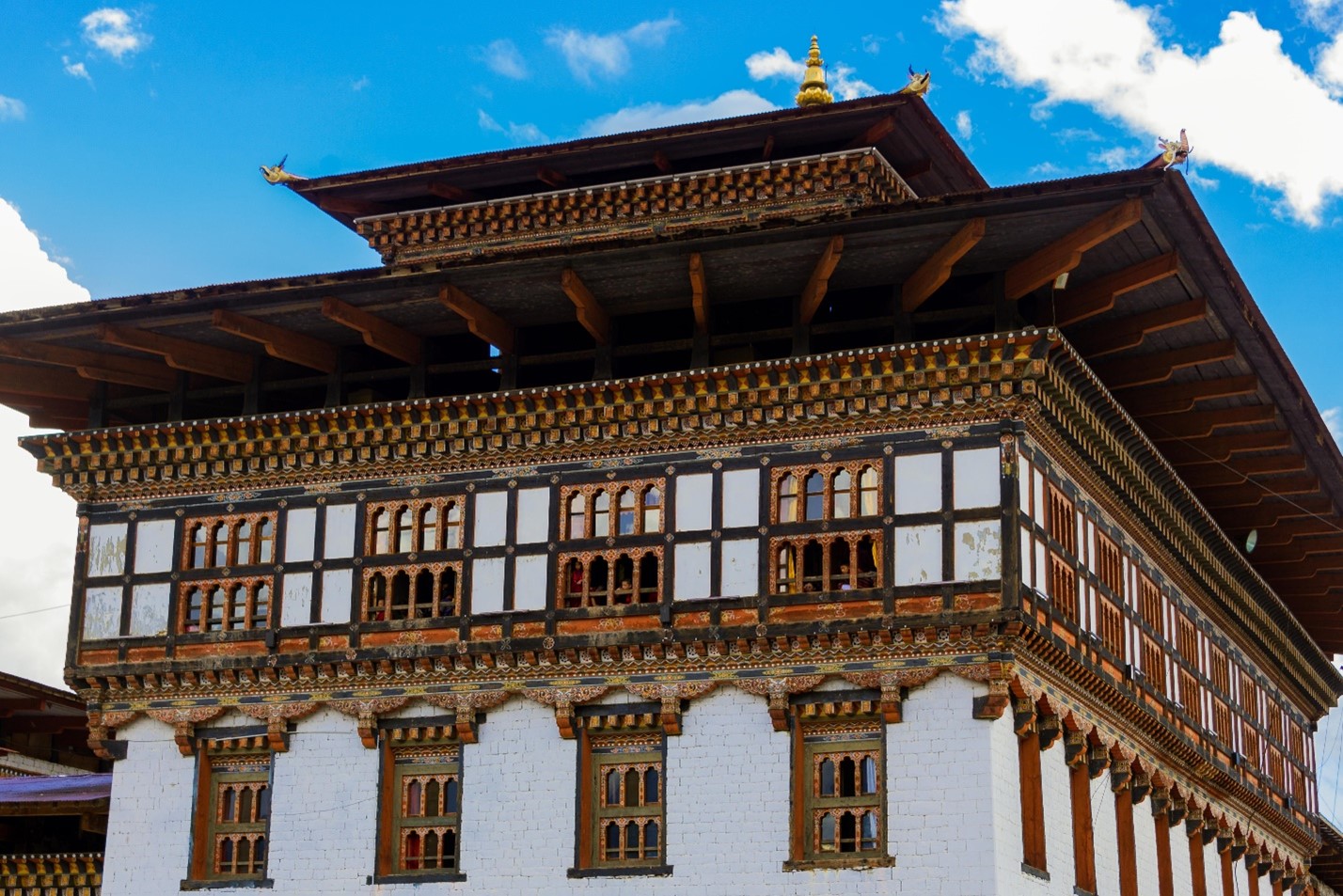
Traditional Bhutanese architecture
The very first fortress, Simtokha Dzong was built in 1629. That's close to 400 years old! These fortresses have been serving as the monastic and administrative centers for the different districts since the 17th century. The dzongs are also used to host festivals and other community events.
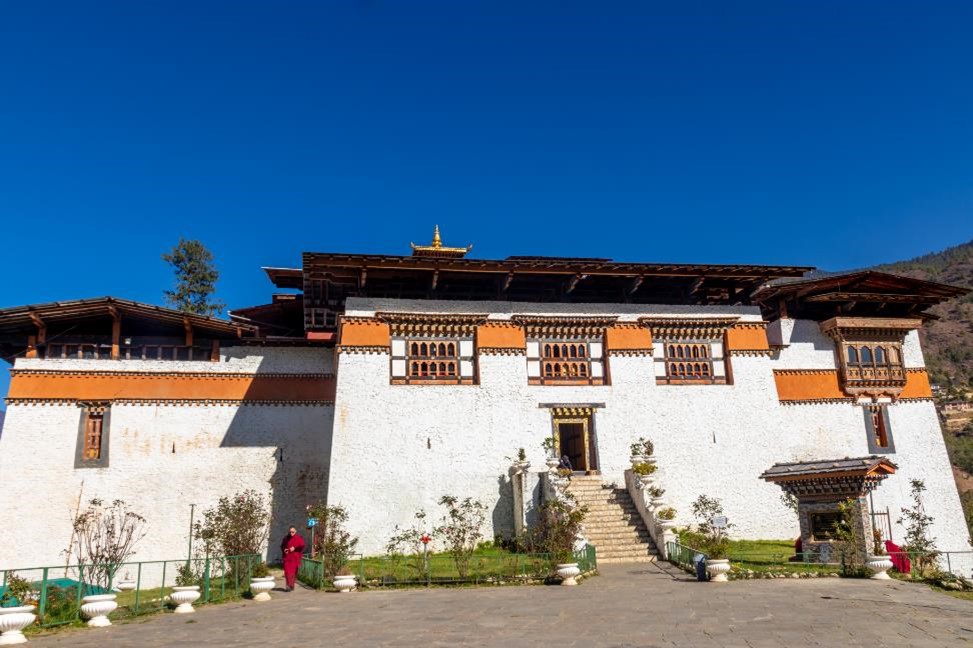
Simtokha Dzong in Thimphu
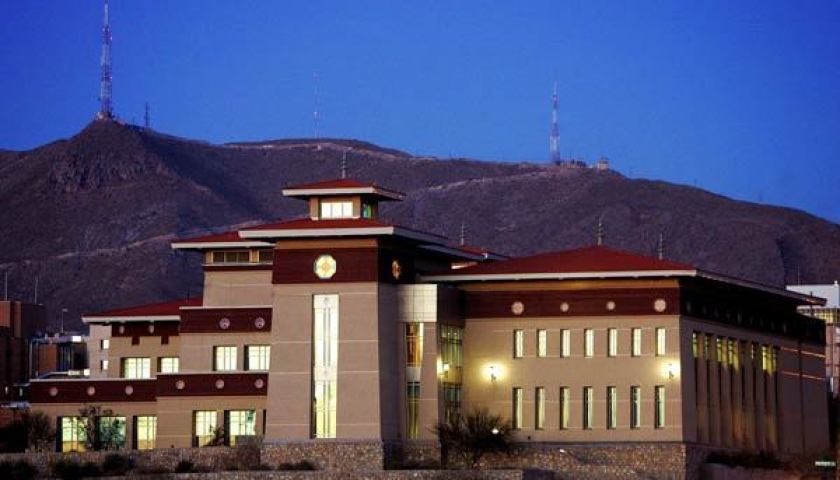
The Academic Services building displays the traditional Bhutanese design elements that make up the theme of the UTEP campus. (J.R. Hernandez / UTEP)
Bhutanese artifact and influence can be seen almost every corner of the campus. Nearly all of UTEP’s 97 buildings are characterized by traditional Bhutanese design offering visitors a glimpse of the beauty and serenity of Bhutan. Even the shelter housing an ATM, the guard kiosks, a Hilton Garden Inn on the edge of campus and the school's parking garages are designed in the Bhutanese theme.
The relationship between the university and the Kingdom goes way back to 1914, thanks to a National Geographic magazine! In that year, there was a National Geographic special on Bhutanese architecture titled “Castles in the Air.”
In 1916, a fire burned down the UTEP campus. The campus moved to a new site across town on a hill overlooking El Paso. The new UTEP site reminded Kathleen Warren, wife of the first Dean, of the National Geographic article and she convinced her husband to have the first new building modeled after the style of the Bhutanese architecture.
Since then, the university has been enjoying great relationship with the Kingdom to this day. When Bhutan started allowing visitors in 1974, a UTEP graduate became the nation’s first international artist in residence. In 1978, Bhutanese Prince Jigme Dorji, was the first Bhutanese student to receive a bachelor’s degree from the university.
The connection was elevated when former university President Diana Natalicio took office in 1988. Natalicio began traveling to Bhutan and inviting Bhutanese performers and artists to El Paso. In 2008, as part of the university’s Bhutan Festival, members of the Bhutanese royal family visited El Paso. “Your connections with Bhutan are not just the oldest in the United States,” Prince Jigyel Ugyen Wangchuck told an audience of several thousand, “they are among the oldest in the world.”
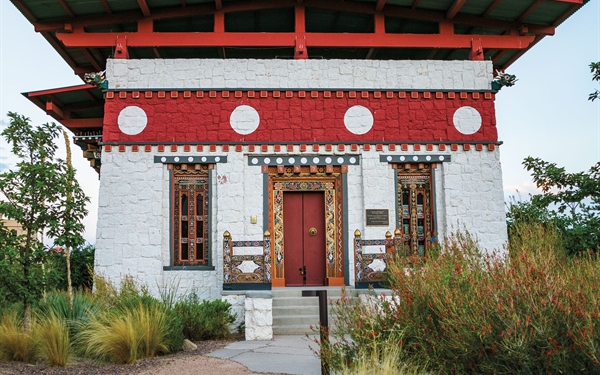 The Lhakhang in UTEP. Photo: Christ Chavez
The Lhakhang in UTEP. Photo: Christ Chavez
The Bhutanese influence at the different nook and cranny of the campus is evident. There is a Lhakhang, a small building in the center of campus in the style of a Bhutanese Buddhist temple. Like Bhutanese temples, the interior is covered in intricate paintings depicting the story of the Buddha and Guru Rinpoche, who introduced Vajrayana Buddhism to Bhutan in the 8th century. The structure was a gift to the U.S. from the Kingdom of Bhutan. It was first assembled by Bhutanese craftsmen on the National Mall in Washington, D.C., for the 2008 Smithsonian Folklife Festival. Later, it was rebuilt at the center of UTEP’s campus with the help of a Bhutanese architect, a carver, a painter, and a carpenter.
 UTEP Associate Vice President for Facilities Management Greg McNicol oversaw the Lhakhang’s reconstruction. Photo: Christ Chavez
UTEP Associate Vice President for Facilities Management Greg McNicol oversaw the Lhakhang’s reconstruction. Photo: Christ Chavez
Behind the Centennial Museum, near the Lhakhang, there is also a Bhutanese Buddhist prayer wheel. The University Library contains Bhutanese artifacts, including a bow and arrow, alongside a painted target, to represent Bhutan’s national sport of archery.
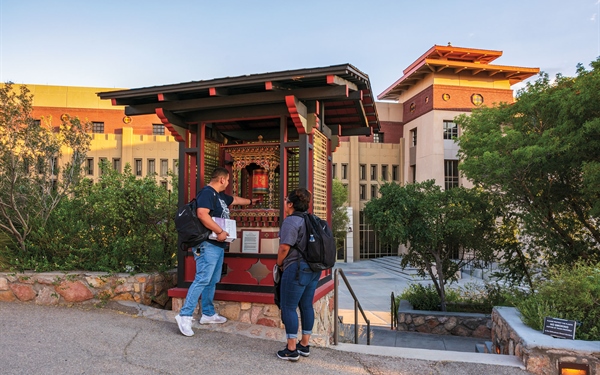 The Bhutanese prayer wheel. Photo: Christ Chavez
The Bhutanese prayer wheel. Photo: Christ Chavez
Bhutanese dzong replica in Japan
In Asia, you can also find a replica of the original Tashichho Dzong located in Kagawa, Shikoku in Japan. The replica is in Maragume, surrounded by the Ayauta Forest, at the edge of the New Reoma World complex. Inside, you can find Bhutanese artifacts and information about the Kingdom.
View this post on Instagram
The government of Bhutan has taken careful measures to preserve the traditional Bhutanese architecture. The specifications and rules for building dzongs are codified in Driglam Namzha - Bhutan's Code of Etiquette.
You can get a glimpse into the replica of Tashichho Dzong in Japan.
May these wonderful treasures of this Himalayan Kingdom continue to serve as an inspiration to the world.




